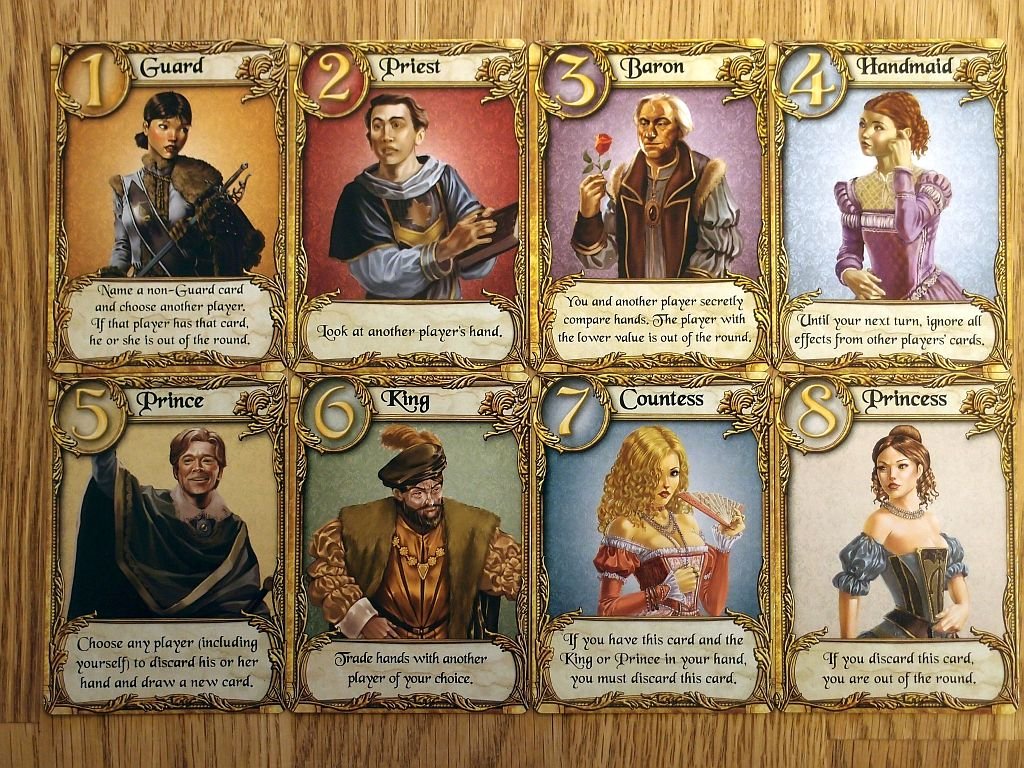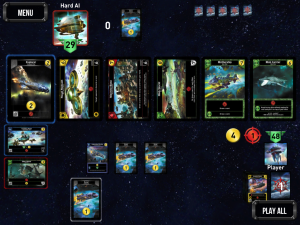Claim is a 2017 trick-taking game from designer Scott Almes, whose best-known titles are the Tiny Epic series (such as Tiny Epic Galaxies and Tiny Epic Zombies). Claim pits two players against each other in a two-phase game where the first phase allows players to battle to build their hands for the second phase, where the more traditional trick-taking mechanic kicks in, but is altered by the five factions (suits) in the game that have unique powers.
The Claim deck has 52 cards, and you’ll use half the deck in each phase. Each player starts the game with a hand of 13 cards, and in phase one, the top card in the deck is flipped over for the two players to try to win by playing the highest card. The Leader – the start player, or whoever won the last trick – plays first, and the second player usually has to follow suit; the higher card wins. In most cases, the cards used to bid are discarded, the winning player gets the face-up card from the deck, and the losing player gets the top card of the deck as a consolation prize – which, of course, can be better than the card the winning player got.
Phase one continues until the players have used their entire hands, by which point each player has a new deck of 13 cards to form their hands for phase two. Players then proceed to play another round of 13 tricks, this time with the winning player usually taking both cards. At the end of the game, players will count up how many cards they’ve won in each of the five factions; a majority of cards wins that faction, and with five factions you’ll usually have one player winning three or even four to win the game. Ties are broken by whoever has the higher-valued card in the faction.

The factions themselves are fun; each one asks you to think a little differently about how to approach it, and the hands you get in each round will require you to come up with different strategies. The one big negative in Claim is that the first round involves so much randomness – your starting hands are random, of course, but the player who loses each trick gets a random card from the top of the deck and can easily end up with the superior card. You could lose all of the tricks in phase one and still get a better hand in phase two. It’s not really a flaw, but a different kind of game, where you know you can play pretty well and still get beaten by the deck.
I picked this up at Origins, and since I bought the game, I got a bonus faction pack as well – ghosts, where you can choose instead to keep the ghost card you played rather than the card you’d normally get during Phase One. You can replace the dwarves, undead, or doppelgangers with ghosts in the original Claim game. There’s a separate, standalone game, Claim 2, with five new factions, and you can mix and match the factions from both games in certain combinations, so there’s fairly high replay value here if you get tired of the base game. It’s a solid filler, nicely portable (the whole game is the deck), quick to play, although I think there are better trick-taking games out there, like Fox in the Forest.









